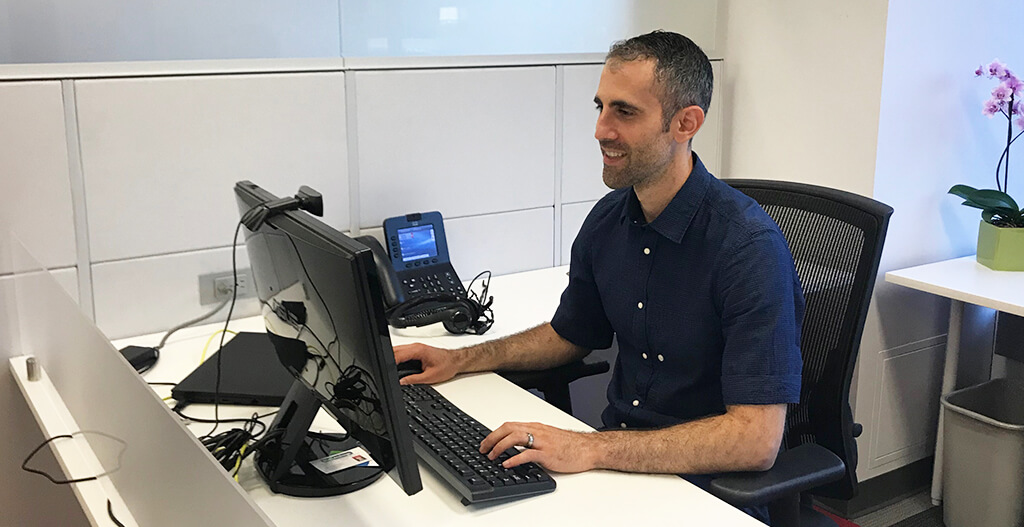
This is part of an ongoing series to help care providers, including Ontario Health Teams (OHTs), advance the province’s Digital First for Health strategy
by Dr. Jeff Alfonsi, MD, FRCPSC
Ontario Health Teams (OHTs) will be leveraging virtual care to meet the integrated care needs of their targeted patient populations. There are many ways health care organizations, both in Ontario and elsewhere, are leveraging virtual care solutions to deliver better care. In this piece, we highlight four home-grown programs, including their objectives and delivery models. (Click here for more detail on these programs and others.)
Patient engagement and education
Paper handouts with care information for patients can be tricky to work with. They get lost, are difficult to keep updated with the latest information and evidence, and take time to print, which can affect workflows. Collecting patient-reported experience and outcome measures (PREMs and PROMs) is also vital to ongoing quality improvement.
Joseph Brant Hospital in Burlington has partnered with CoHealth to help reduce paper-based processes, capture patient-experience metrics to inform improvement plans, and enhance access to a patient-centred information and educational program to support care transitions.
Patients can complete surveys and access information on community resources, programs, services and more via a free downloadable app on a smartphone or tablet. Increased patient engagement and better connectivity with care providers are among the many positive outcomes.
Access to resources
Virtual care can also help connect patients with needed resources between dedicated appointments. Ottawa Regional Cancer Foundation’s Cancer Coaching program is offered with the support of technology provided by NexJ Health. Its objectives: to help cancer patients and survivors become active participants in their care; to expand health and social care for cancer survivors; and to address gaps in patients’ physical, emotional, informational and spiritual care related to their illness.
Through the Cancer Foundation’s website, patients and their families can download the NexJ Connected Wellness coaching platform to their device for free to access an action plan that helps guide them through their cancer journey. Additional one-on-one coaching is offered via secure messaging or videoconferencing.
The program has resulted in patients reporting more confidence in managing their disease and caring for themselves. Fully 85 per cent of participants say their quality of life has improved.
Self-reporting and monitoring
Youth with mental health challenges can experience isolation and marginalization. Smartphones can be a critical care-support tool, particularly among young people.
Lawson Health Research Institute, working with London Health Sciences Centre, St. Joseph’s Health Care London, Woodstock General Hospital and community-based services, partnered with Input Health to offer the TELEprom-Y (TELEmedicine and Patient-Reported Outcome Measurement – Youth) mobile program.
The goals of the initiative are to improve community integration and access to mental health services for those between the ages of 14 and 25 with symptoms of anxiety and/or depression; reduce the need for in-person visits; and lower health care system costs with effective, early intervention. It also enables participants to input self-reported metrics and access valuable information and resources. A research study still in recruitment, data and outcomes are pending—although early results are promising.
Patient health
Kingston Health Sciences Centre offers virtual follow-up with patients at home using Direct-to-Patient Video Visits through OTN as part of its stroke prevention clinic. Typically, it takes a patient 80 minutes on average to travel, park, navigate the hospital, wait and then see their physician— all challenging for stroke patients who may have neurological deficits that impact mobility.
Use of video removes the need for travel—especially helpful in inclement weather—and enables care providers and patients alike to focus solely on the clinical consultation, which typically lasts an average of 10 minutes.
Not surprisingly, this program—deemed suitable for an estimated 30 per cent of follow-up patients—has had very positive outcomes on the patient experience. One-third of patients surveyed indicated video follow-up visits were better than in-person appointments. An added bonus: estimated per-visit savings for the patient of $52.83.
Tapping the promise of virtual care
The applications of virtual care are many, from giving patients more timely and up-to-date information to supporting new ways to connect patients and care providers in between visits. Virtual models can also help address some of the social determinants of health that can impact a patient’s ability to attend in-office appointments on a fixed schedule.
Successful integration of virtual care into care delivery is dependent on support for implementation that addresses patient needs, technical considerations, and clinical workflows. Ongoing and timely measurement of both clinical and non-clinical metrics — including patient satisfaction and efficiency — are vital considerations.
Dr. Jeff Alfonsi, MD, FRCPSC, is an Assistant Professor at Western University and Director of Medical Affairs at OTN.
The next installment in this series looks at common myths and misperceptions about virtual care.
